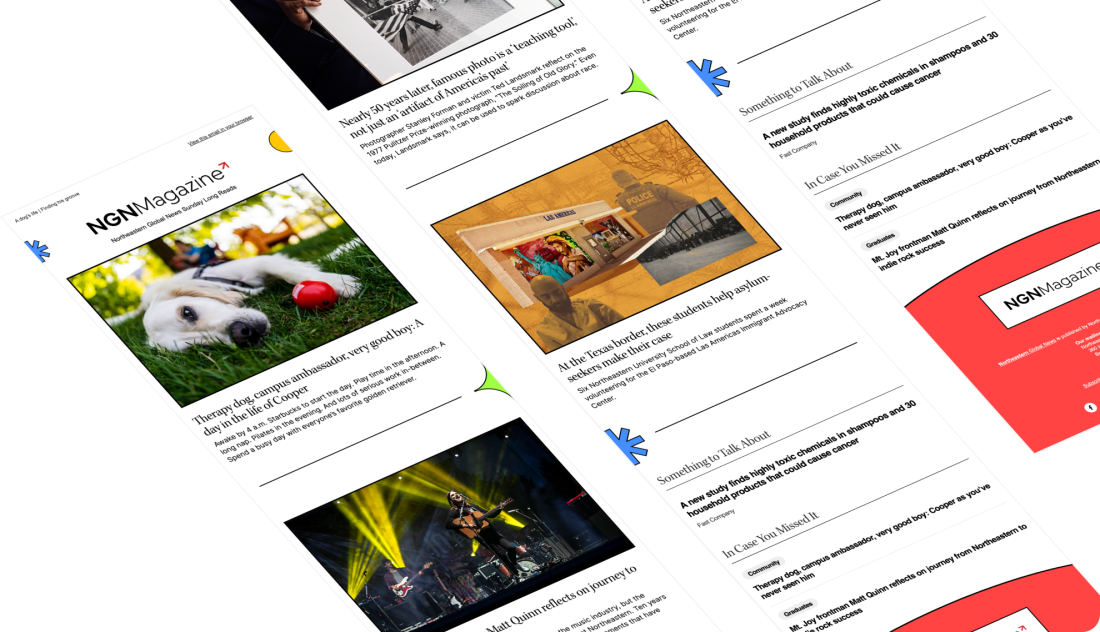Published on
Can we make ‘citizen science’ better?
For centuries, environmental scientists have worked with the public to collect and enrich field data. Northeastern University researchers are studying ways to improve those partnerships — and how they can unlock new, powerful discoveries.

During a stifling heat wave in August 2021, 80 volunteers from Massachusetts communities along the Mystic River fixed sensors to their car windows and bicycles, traveling along 19 predetermined routes recording ambient temperature and humidity levels along the way.
The data they collected — part of the Wicked Hot Mystic project — contributed to a growing understanding of how the effects of extreme heat play out across cities. Along Mystic River communities like Cambridge, Somerville, Everett and Malden, heat fluctuated most dramatically in historically “red-lined” areas, with lower-income residents and less green space. Similar trends have been tracked across the United States.
But the project didn’t end — or even begin — with the data.
Working with the Mystic River Watershed Association, a local nonprofit, Wicked Hot Mystic researchers took the community temperature, so to speak, ahead of time, parsing what locals hoped to get out of the research.
“We asked residents what they really wanted us to find out,” says David Sittenfeld, a Ph.D. graduate of Northeastern University and the director of the Center for the Environment at Boston’s Museum of Science, which spearheaded the project. “We spent a long time listening, interviewing resilience planners about their priorities. And we worked closely with them to find out things in ways that comported with those priorities and ideas.”
The project also included an app interface for citizens to record observations beyond the numbers. The combination of qualitative and quantitative data allowed urban planners to precisely target their heat mitigation efforts in the most vulnerable areas.
That reciprocal dynamic is a model for how researchers like Sittenfeld and Damon Hall, a Northeastern environmental science and public policy professor, want to reframe “citizen science” — in which community volunteers help conduct field studies and collect data.
We can have people help collect data in the communities that they know best, but they also can help us to understand what their hopes, dreams and aspirations are.
David Sittenfeld, Director of the Center for the Environment at Boston’s Museum of Science
Scientists have long relied on public contributions in a wide range of fields, from early AIDS research to tallying insect populations. But in a paper published in the scientific journal BioScience in March, Hall and his collaborators argue that such partnerships have historically been unbalanced, with researchers taking more than they give back.
“Citizen science is personal,” the paper’s abstract reads. “Participation is contingent on the citizens’ connection to a topic. But … scientists appear to have an acquisitive, data-centered relationship with citizens.”
By readjusting that dynamic, however, Hall, Sittenfeld and others are working toward a model of citizen science that can be both more rigorous and beneficial to the communities in which it takes place. That’s particularly true when it comes to climate change research, where participants are directly affected by the local warming trends they are helping to document.
“We can have people help collect data in the communities that they know best, but they also can help us to understand what their hopes, dreams and aspirations are,” Sittenfeld says.
The seeds of citizen science are older than the United States itself — in 1776, Thomas Jefferson had ambitious plans to collect weather data by distributing thermometers to local officials around Virginia and have them record temperatures twice daily. Throughout the 19th and 20th centuries, scientists leaned on volunteers for data including whale populations, meteor sightings, sea turtle nests and ocean currents. One of the longest-running citizen science projects, the Audubon Society’s Christmas Bird Count, has been active since 1900.
Featured Posts
In more recent years, the rise of big data, consumer technology and the ubiquity of low-cost GPS devices, like pedometers and fitness trackers, have meant that the sheer volume and diversity of material that community-sourced projects can draw upon has grown by leaps and bounds.
“The computational capacity to deal with the amount of observations and data is what a lot of this hinges on,” Hall says. “There are some impressive figures coming out of astronomy. There are games being developed by molecular biologists that are looking at the ways different [molecular compounds] can be structured, letting the public just play around with them and see what kind of innovations occur. That’s pretty cool stuff.”
And in the internet age, opportunities for volunteers to contribute are endless. SciStarter, which Sittenfeld describes as “Match.com” for would-be citizen scientists, lets users comb through a searchable database of projects according to their interests — from counting neighborhood squirrels to monitoring nitrate levels in drinking water.
But the BioScience paper argues that researchers who work with citizen scientists owe it to them to ensure they are more wholly involved — especially when the data has implications for their homes and livelihoods.
“Where citizen scientists have a vested stake in a shared resource, science teams should be obliged to share the outputs of data,” the paper reads. “Researchers take data but do not always make the effort to close the loop by taking the study results back to their contributors. … Scholars question the ethics of this open-loop approach especially for research involving public funding or shared natural resources.”
In addition to ensuring a reciprocal working relationship, Hall argues for layering a qualitative dimension to that new wealth of statistical data — in the form of building relationships with citizen scientists, asking for their observations, and teasing out the kind of singular expertise they can offer. This, he argues, has powerful advantages for researchers. “It’s helped in terms of data analysis — having more hands and eyes to get an assessment of what are regular conditions, what are abnormal conditions [in that particular study],” Hall says.
Additionally, when the community participates in research, it has more of a stake in its success. “Public ownership of science creates more support,” Hall says “Most of our funding is federal or state level, so it’s important to have voters see the value of the work that we do. Explaining our work to lay audiences forces new conversations.”
Involving the community from jump — as the Wicked Mystic project did — can also help scientists better communicate their ideas overall, Hall argues.
He gives an example from his early career, when he spent a lot of time studying the river coastlines of rural farming communities. On a trip in 2006, he found himself in a small town in Montana talking about water management with the mayor and the public works custodian — a “jack of all trades” for fixing things around town, according to Hall.
“The mayor was highly educated, well spoken,” Hall remembers. “And the custodian was very rough around the edges. But I saw how much he truly knew about that area that she didn’t.”
Still, as the polished politician held forth, Hall could feel the custodian, who had far less formal education, shrinking away from the conversation. Sensing an opportunity slipping away, he set about pumping the man up.
“I remember saying, ‘Sir, you have tremendous amount of expertise that I could never get in books; [your family] has lived here for generations.’”
Newly engaged, the public works officer shared what he knew about the river and surrounding banks. He coined a term that Hall and others studying river coastlines still use today: the meanderland — the riparian area right on a riverbank.
“He gave us one of our best terms to describe a complex ecological system,” Hall says.
He thinks that scientists would be remiss to ignore this kind of granular understanding.
“It’s great to involve citizens in gathering data and analyzing data. But what else can they provide? And then what else can we give them? There’s mutual aid here that makes their lives better, and it makes our science better.”
Schuyler Velasco is the campus & community editor for Northeastern Global News. Email her at s.velasco@northeastern.edu. Follow her on X/Twitter @Schuyler_V.











